Lately, you’ve been dreaming of having your own suckermouth pleco, but don’t really want to look after a 2 feet long monster.
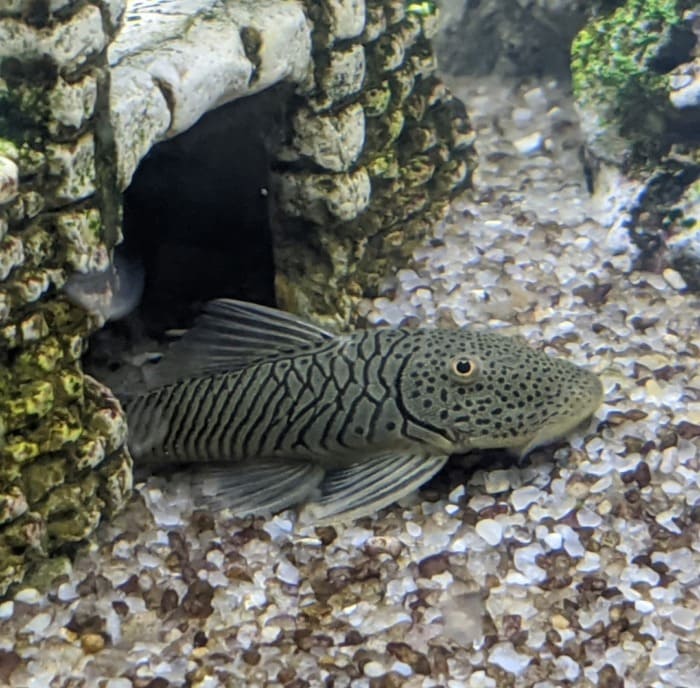
The rubber lipped pleco’s size should come in handy.
To have someone furiously cleaning the tank for you is a luxury, right?
But will the rubber lip plecostomus really snack on algae?
Does this pleco species require extensive care? Are they as aggressive as their larger cousins?
In this Aquanswers guide, you’ll learn everything you need to know about the Rubber Lipped Pleco…
Short Introduction to the Rubber Lipped Pleco
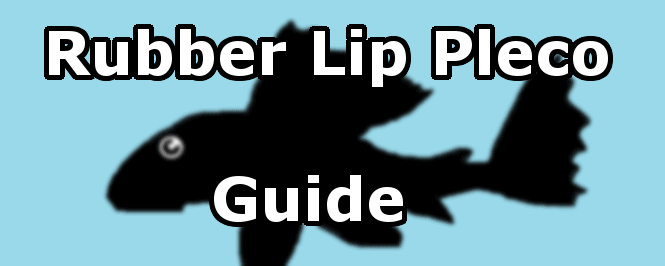
The Rubber lip pleco is a bottom-dwelling, freshwater fish that belongs to the Chaetostoma genus.
Chaetostoma is part of the largest family of catfish – the suckermouth armored catfishes. Besides “Rubber lip pleco”, other common names for this fish are striped Rubber nose pleco, striped or blonde bulldog pleco, Chaetostoma sp. L444.
These fish have specially enlarged gills speculated to serve the purpose of breathing while being attached or feeding.
They are also avid algae consumers (under certain conditions).
Males can be distinguished from females by their broad head, large pelvic fins, and slim abdomen.
The pelvic fins play a role in breeding by keeping the sperm from getting washed away by the strong water current.
A common misconception about Rubber Lip Plecos
Fish stores often confuse the RL with the Rubber pleco (Parancistrus aurantiacus) and falsely advertise them as one another.
The most distinctive differences between the two, in layman’s terms, are the maximum growth size and the coloration.
Rubber Lipped plecos have spots on their head where the Rubber pleco (also known as Chubby pleco) has somewhat crossed stripes.
A true RL pleco will reach no more than 4.5 inches in body length and will not experience a dramatic change of color.
On the opposite side, the rubber plecos reach up to 7 inches, later shifting from grey to gold-ish coloration.
I’ve chosen two photos with a pronounced distinctive coloration so that you could compare them.
Here’s how a rubber lipped pleco (Chaetostoma formosae) looks like:
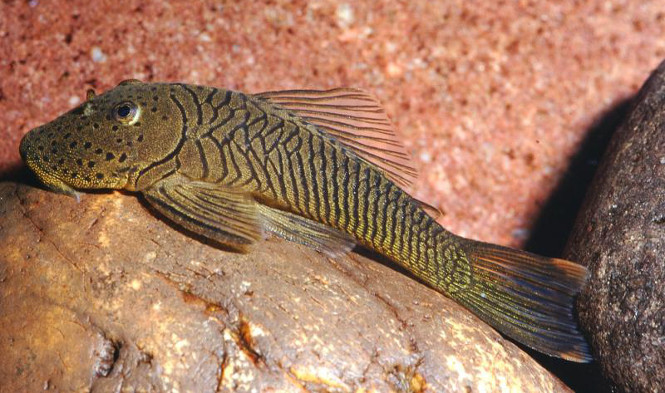
And here’s how a rubber (Chubby) pleco looks:
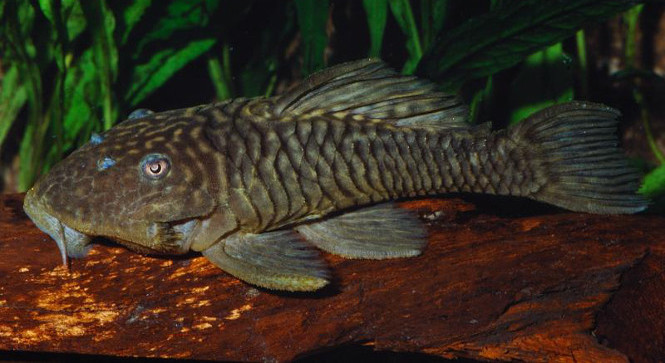
I’ve never had the luck to witness mine become gold, as it appears the fish decides when that will happen and if it will happen.
However, when it comes to differences that’s about it.
Both of these plecos have similar needs in terms of care (except, of course, tank size) hence the common confusion.
If you already bought yours or plan to get one soon you will be satisfied with either.
Don’t worry if you’ve got the Rubber pleco, this guide is for you as well.
They grow really slow. You’ll have your time to prepare a bigger tank later on.
Expected max size of a Rubber Lipped Pleco
This species of pleco remains relatively small compared to its brothers:
A Rubber Lip pleco will reach a maximum size of 4.2 inches (10.6 cm) in full body size. The Chubby Rubber pleco, as established, will grow up to 7 inches (17.7 cm), which is still not near enough a Common pleco.
In small tanks (20 gallons) Chubby plecos should reach about 5 inches at max, before being relocated to a larger one.
Anyway, Rubber Lippled plecos are slow growers, so don’t be bothered if yours does not hit these numbers soon after its arrival.
I’ve had mine add about an inch in one and a half years.
Bear in mind that this does not mean you can stick either species in any tank with less than 20 gallons of volume.
They may not grow much, but they do require their scavenging space.
They can also get territorial among each other, other plecos, or any catfish, for that matter.
If you’d like to enjoy more than one I’d strongly suggest that you provide them with at least 55 gallons of a fish tank for starters.
If it’s a long well-planted one – even better.
Related read: Small Pleco Fish That Grow To No More Than 4.3 Inches
Diet & foods
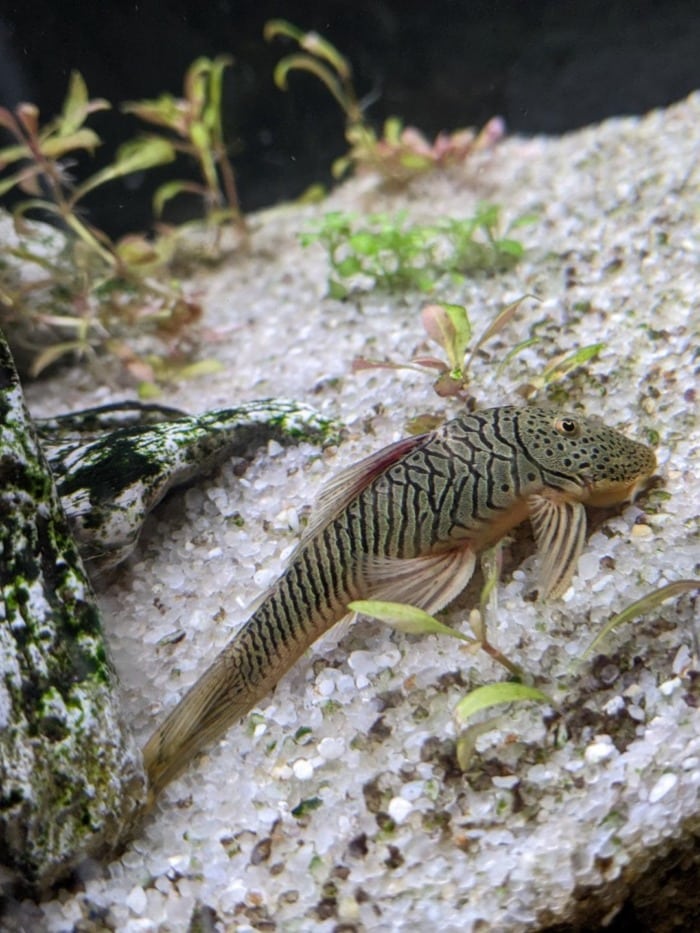
RL plecos eat algae almost exclusively unlike other species of pleco. Though they are classified as omnivores they would much prefer sticking to a herbivorous diet.
However, it is possible for them to lose interest in the natural growth of your aquarium.
Once they get comfortable with externally-supplied foods (meaning you feeding them) that deviate from a mainly algae-based diet they may give up on your aquarium’s algae.
This only happens in extreme cases when they were fed this way from an early age.
With practice, I learned that it is really best if I purchased mine when they were young.
When I’m about to get one I always ask the guys at the store to give them some veggie or algae wafers, just to make sure they will eat it.
Young ones are just under 2 inches.
If you’re hoping that they will keep your algae growth under control you’d need to confirm that they are still interested in that.
I had this one Rubber Lip who would eat anything BUT algae…
I can’t say it was a waste of money, as I really like these creatures, but rather a waste of talent.
A single Rubber lipped pleco can demolish a heavily algae-infested 20-gallon tank in just under two weeks.
Or so I’ve witnessed in my personal experience.
Another reason they may not be interested in cleaning up a tank is not enough CO2 for your plants.
Such conditions favor the algae allowing it to fortify its cell walls.
This makes it harder and therefore unappetizing to fish. Learn more about that in the guide I wrote on exterminating black algae for good.
By the way, Rubber Lip plecos do eat black algae, along with green, blue, and brown algae.
They can definitely be placed among the ultimate algae-destroying machines.
You can learn more about top-performing algae-eating fish (and not only) here, in my guide. That being said you should never count on algae growth alone for your RL pleco’s diet.
Rubber Lip plecos love eating:
- Zucchini (preferably fresh)
- Spinach
- Romaine lettuce
- Spirulina
- Peas
- Cucumber
- Seaweed algae sheets
- Algae Wafers
A rubber lipped pleco’s diet should be almost entirely plant-based.
Here and there you can drop them some meat though, but don’t overdo it.
These fish can eat freeze-dried bloodworms, tubifex worm, or brine shrimp.
High-quality flake food will be alright too.
On some occasions, people report their Rubber Lips would eat carnivore pellets as well.
Just know that the digestive system of the rubber lipped pleco is designed to digest plant matter and fiber.
For more on feeding your aquatic pets check out The Ultimate Guide to Fish Food: Pros and Cons & Best Choices!
Expected lifespan
With good care, the Rubber lip plecos will live up to 12 years.
And fortunately, they’re not difficult to look after.
They’re quite hardy and there aren’t any diseases they’re specifically prone to.
However, stress can still have an impact on their well-being as with every other fish.
Therefore, maintaining pristine water quality and furnishing the tank with enough hiding spots, is essential for the longevity of any rubber lipped pleco.
Additionally, you’ll want to put yours in a friendly environment, avoiding aggressive aquariums.
Author’s note: Rubber lipped plecos don’t have any scales on their body, so you should avoid using salt or copper treatments in case of a disease.
Behavior & compatibility
Rubber Lipped plecos don’t like living with aggressive tank mates.
They are very peaceful by nature.
All they would want to do is lie around or comfortably hide in an artificial cave.
They are a good addition to a community tank.
RL plecos will not really bother your other fish, unless there are other plecos, as they get a tiny bit territorial among each other.
This can be avoided by providing them with plenty of space to roam.
To see some good ideas on calm community fish that will get along with your Rubber Lips, click here. Anyway, they also like to hide under or hang out on smooth-surfaced round rocks that resemble the bottom of a river.
Naturally, they LOVE having some driftwood around.
If you haven’t any, I have a pretty decent guide on where to find such wood. It’s a part of their natural habitat.
My observations are that if they could they would forever glue themselves on it.
Anyway, they will be more active if nothing is stressing them but are an overall shy fish.
Whenever I was watching my Galactic Algae Destroyer, as I named him, he would just stand still and pretend to be a statue.
As soon as I turn my back, however, he’d start moving around and switching hiding places.
These critters are mainly nocturnal and you won’t see them doing much before the lights go off.
After actively spying on them I figured that mine would come out during the night and go about their business.
It’s after dark when they will feed on your algae.

How to take care of a Rubber Lip Pleco?
Rubber Lipped plecos really enjoy heavily planted aquariums, that are well-aerated.
A medium to high water flow is a must as their natural habitats are the rivers in Peru, South America.
They will greatly appreciate smooth stones or wood under a current for their chill spots.
They like to have hiding places, as they are not fond of others’ attention during the daytime.
The minimum tank size for a single Rubber Lip pleco is 20 gallons (the Long tank version is better), but as this hobby goes, it’s always recommended to scale up the minimum requirements if you can.
I’d say a larger tank would make them happier. A 55-gallon tank has a bottom with dimensions of 48.25 x 12.75 inches which can be ideal for this small pleco.
Author’s note: Some online sources argue whether a Rubber Lipped pleco should be kept in 15 or 25-gallon tanks. To someone familiar with aquarium sizes, these arguments are meaningless. That’s because we need to take into account that, for the most part, this pleco species is a bottom dweller.
The bottom footprint of a standard 15-gallon tank is 24.5 x 12.5 inches. The bottom of a standard 25-gallon tank covers 24.25 x 12.5 inches, the same as a standardly shaped 20-gallon Tall tank. As you can see it’s pretty much the same space, in the context of keeping a Rubber Lipped pleco.
Anyway, a fully grown 7-inch specimen of Chubby Rubber pleco should be relocated to a 75 or a 100-gallon tank.
The pH levels of the aquarium water should be in the range of 6.5 to 8 and the KH levels – between 8 and 12. The general hardness of the water should be between 10 and 15 dGH. An ideal temperature for the Rubber Lipped pleco is between 71 and 78°F (21.5 to 25.5°C).
Breeding
Successfully breeding a rubber lip pleco in captive conditions is extremely challenging.
There are very few reports of breeders being able to achieve this, and none of them come from credible sources.
The difficulty in breeding these fish stems from the lack of sufficient water current in home aquariums.
In the wild, the female lays a clutch of eggs underneath a flat surface that’s exposed to a strong water flow.
The male then attaches himself to the surface and protects the eggs until they hatch.
Since this new role is extremely taxing on the male’s body, his energy needs and oxygen consumption get increased.
Hence the need for a strong water current.
Supposedly, setting up a circulation pump blowing water down the length of the aquarium along with a mixture of pebbles and slate should meet these criteria and provide suitable breeding conditions for the rubber lipped pleco. However, I haven’t tried this yet, so it’s up to the more opportunistic among you to give this method a try.
Don’t forget to post a comment if you do.
Where can you buy one?
After some feedback from my readers, I realized that not everyone was so lucky to find a Rubber Lipped pleco in their local fish store.
I managed to negotiate a delivery for mine with a salesman near my location.
However, if you aren’t able to find this type of pleco where you live, you could simply order it online.
One place that I’ve seen Rubber Lip plecos for sale is AquaBid, but there are also other online aquarium stores that you could try. Visit the link and check out the retailers that specialize in selling freshwater live fish to improve your odds of finding one.
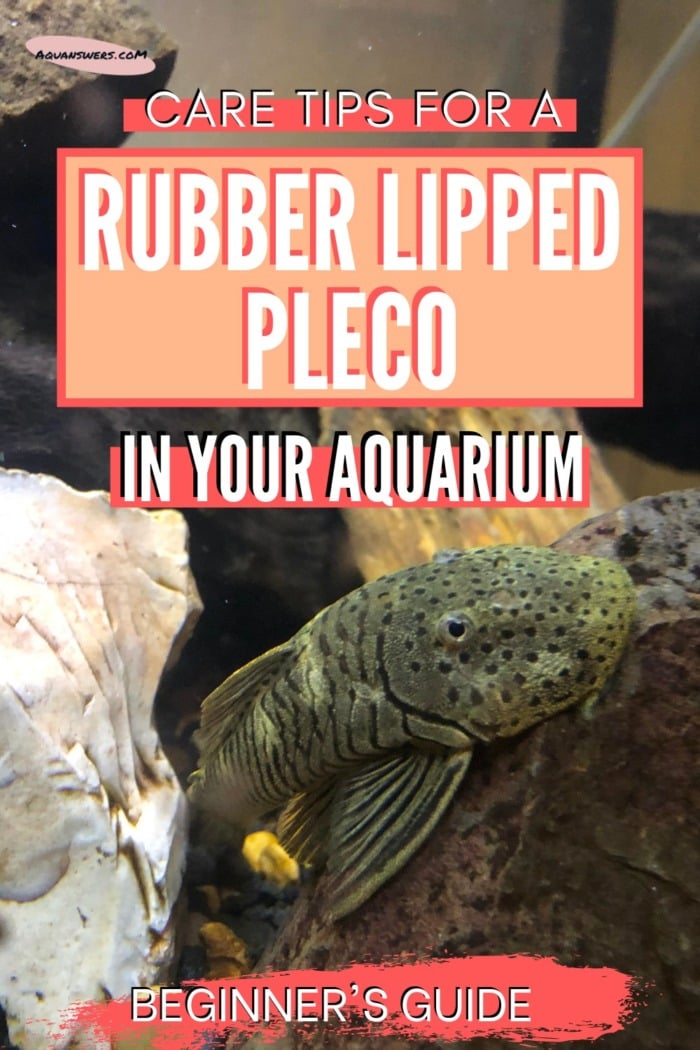

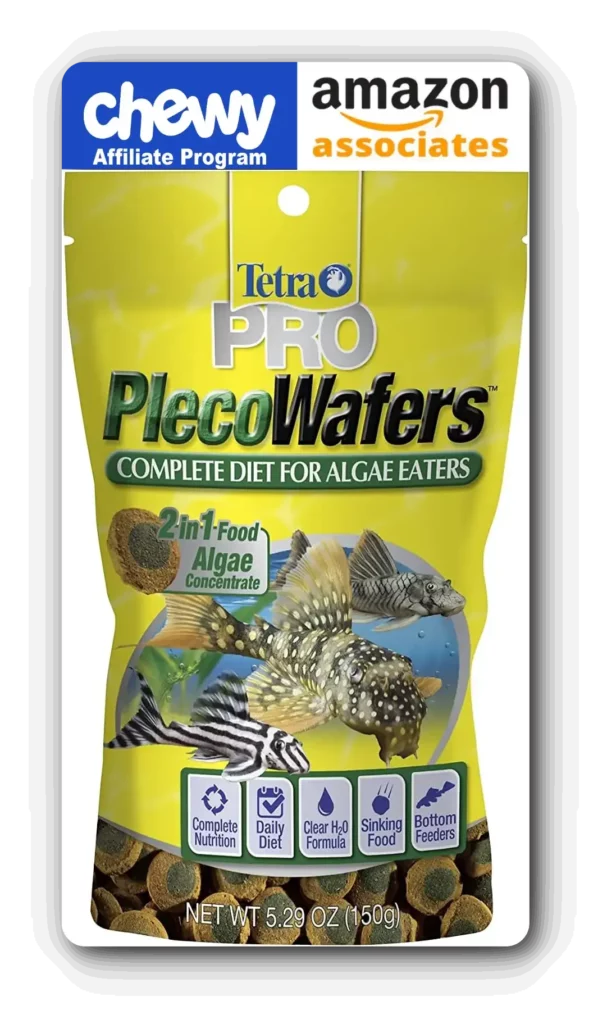

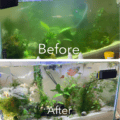
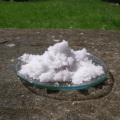
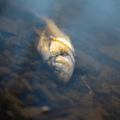


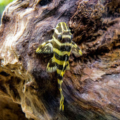
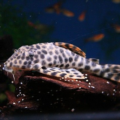
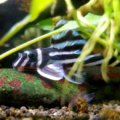
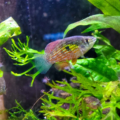
Can i have them in the same tank with arowana?
Hey, thanks for reaching out! So this all depends on the type of Arowana you have and how aggressive its personality can get. A Pleco of a similar size to your Arowana might not get hurt especially if you have a large enough tank with visual barriers with a lesser aggressive Arowana. It can work.
Hi.
I just bought 2 rubber lip plecos. They are very small now.
At the fish store, I was told that my 36 bowfront is big enough for them.
I do not have a second tank, and do not plan to get one.
Can two rubber lip plecos live in my tank? Other scavengers include one kuhlii loach and one bumblebee catfish (seen infrequently).
Also, I feed them every other night four very small algae wafers and six shrimp pellets. Will these RL plecos eat anything on the bottom or just algae?
Sorry for the length.
Hi,
Depends on the bottom footprint of the tank. Typically, bowfront tanks have something like 30 x 20-23 inches bottom footprints. It’s technically possible to keep 2 rubber lipped plecos in there — just monitor their relationship when they grow. I am not sure how they would fare around the other bottom dwellers though. If their personalities don’t develop to become obnoxoius to others it should be fine.
As for their eating habits – they’d probably eat stuff on the bottom. What you’re doing right now seems very reasonable, I’d stick to that regimen.
Good luck!
How do you keep the veggies on the bottom of the tank? Especially since they float. Not sure my Plecos will eat them. they are use to sinking wafers and not that interested in algae wafers, the snails usually clean those up.
Hi Mary,
That’s a valid question and I’m surprised you’re the first one to ask!
There are various ways, but what I’ve tried and found to work is:
1. skewering them to wooden chopsticks and “planting” the chopsticks in the substrate, making sure the upper edge is against a wall or a piece of decoration
2. planting weights (very easy)
Hope this helps. Any fish-safe weight would suffice though.
Regards
I have a few live plants & several Marimo moss balls in my tank. Would a rubber lipped pleco eat/destroy these? I don’t mind a bit of plant munching but I’d be sad if all my plants were entirely eaten/killed.
Hi
In my experience – no. Mine are not really interested in munching on plants other than hair algae or algae wafers.
Go get one.
I have had mine lay eggs at least 5 times. I don’t know what I did but there you go. I have a piece of slate leaning up against the glass the female dug out the area behind it. Male enticed her she laid eggs and voila. I have taken 3 broods away the others I let him have and of course they got all eaten.
can i have one rubber lip in a 30 gal with two goldfish and an apple snail? I am getting the tank soon and want to know if it would make a good edition.
Hi Lindsay,
Though this has been answered many times in the comments – Sure, you can put them together. Make sure that you diversify the pleco’s diet and provide him with meat protein.
That’s about it.
Good luck! It’d be nice if you reported back when the fish tank is all set. 🙂
Thanks!